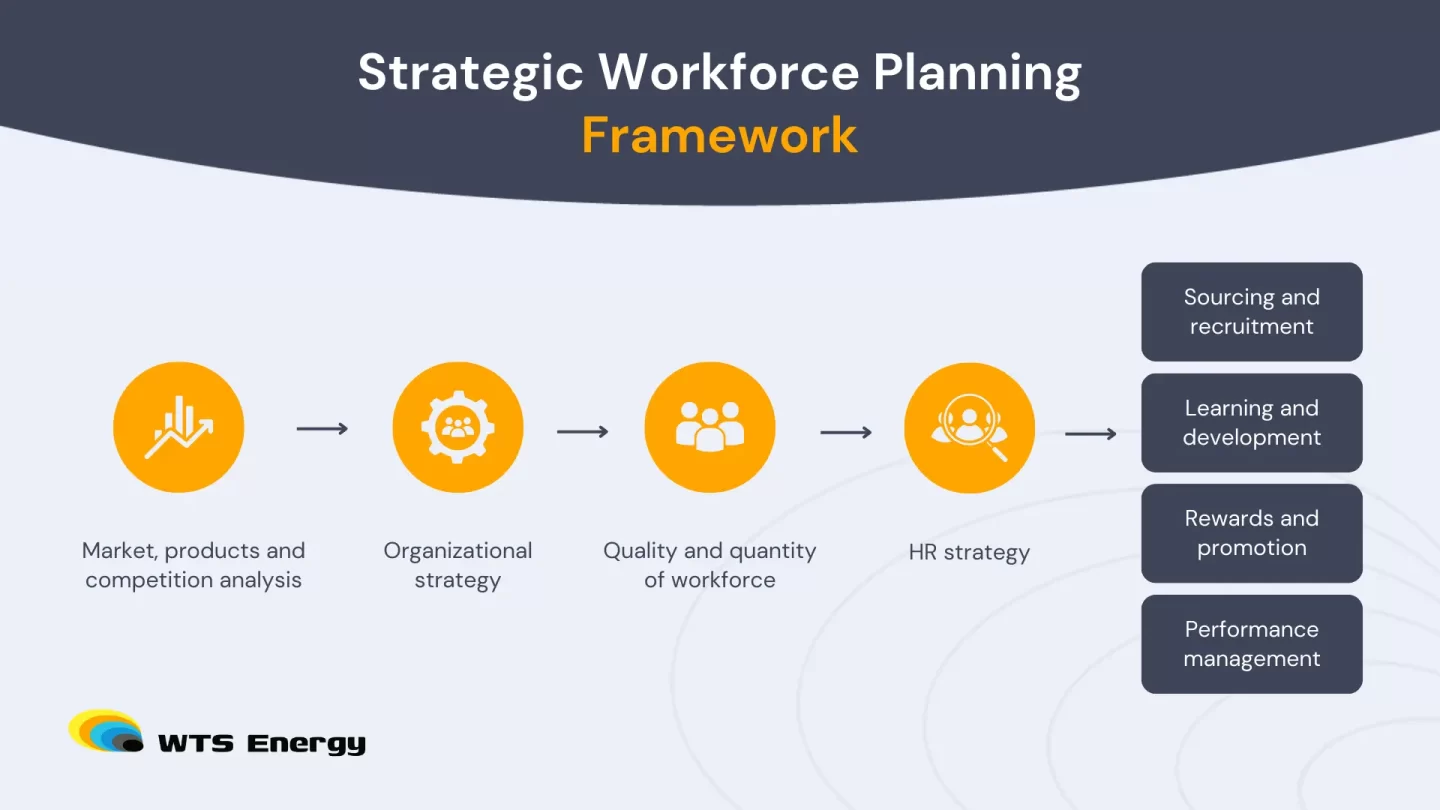You’re likely no stranger to the ongoing challenges of balancing your workforce needs in the dynamic energy sector. From the pressing demand for specialized skills to the unpredictability of labor markets, the energy industry is at a crossroads. According to Randstad’s latest talent scarcity report, factors such as slower migration after the pandemic, aging of the working population have influenced a less efficient global labor market. A strategic workforce planning (SWP) approach indeed offers a solution to these challenges, particularly in addressing under- and over-staffing issues in sectors like energy.
Understanding Strategic Workforce Planning (SWP)
Strategic Workforce Planning (SWP) is more than just a buzzword. It is a critical process that aligns your workforce with your business’s current and future needs. As an HR leader, you’re tasked with ensuring that your organization has the right talent, in the right roles, at the right time. SWP helps you achieve this by forecasting talent needs, identifying skill gaps, and implementing strategies to address these gaps effectively.
SWP seeks to minimise the danger of understaffing and maximise costs by guarding against overstaffing and guaranteeing that the company can consistently meet its goals. HR leads it, but business and HR executives run it. Therefore, the goal of strategic workforce planning is to have a workforce with the right size, shape, cost, and agility.
Our consultancy services can support you in developing a robust SWP framework. This framework not only addresses your immediate staffing needs but also positions your organization for long-term success. Whether it’s dealing with unforeseen circumstances or aligning with your company’s long-term vision. We’re here to guide you every step of the way.
Key considerations for Strategic Workforce Planning for HR professionals
As the driving force behind your company’s human capital strategy, you’re responsible for minimizing the risks of understaffing and the costs of overstaffing. SWP provides the framework you need to maintain a workforce that’s not just the right size, but also has the right shape, cost efficiency, and agility to meet your company’s goals. While SWP is a collaborative effort involving both HR and business leaders, your role is crucial in leading and executing these initiatives.
A rigorous people strategy and ongoing workforce gap analysis are the two main components of strategic workforce planning (SWP). It considers unforeseen circumstances and developments while staying grounded in the organization’s long-term plan. Check out some examples of how to implement strategic workforce planning here.

Our recruitment services are tailored to help you find the top talent that fits your strategic needs. While ensuring that you can meet your business objectives consistently and efficiently.
Common challenges where you can implement strategic workforce planning:
I. Addressing talent shortages
The energy sector requires specialized skills that are increasingly difficult to find due to factors such as an aging workforce, slow migration, and rapid technological advancements. The post-pandemic labor market has exacerbated these shortages, making it harder to recruit and retain skilled workers.
SWP Solution: By forecasting future talent needs based on industry trends, technological changes, and business growth, strategic workforce planning allows energy companies to identify and address skills gaps proactively. This can include investing in training and development programs, reskilling current employees, and creating partnerships with educational institutions to build a pipeline of future talent.
II. Balancing Workforce Supply and Demand:
Fluctuations in energy demand, driven by factors like economic cycles, regulatory changes, and technological disruptions, can lead to periods of under- or over-staffing. Under-staffing can lead to operational inefficiencies and safety risks, while over-staffing increases labor costs and reduces profitability.
SWP Solution: SWP enables energy companies to model different demand scenarios and adjust their workforce accordingly. This involves optimizing workforce size, deploying talent more effectively across different projects, and utilizing contingent labor when necessary to meet peak demands without long-term overstaffing.
III. Mitigating the Impact of an Aging Workforce:
The energy sector is particularly affected by an aging workforce, with many experienced professionals nearing retirement. This creates a risk of losing critical expertise and knowledge, leading to gaps in leadership and operational capabilities.
SWP Solution: Strategic workforce planning ensures that prepared and trained individuals fill critical roles when senior employees retire. This, through succession planning and knowledge transfer initiatives. It also involves creating mentorship programs where experienced workers can pass on their knowledge to younger employees. This results in ensuring continuity and preserving institutional knowledge.
IV. Enhancing Agility and Adaptability:
The energy industry is undergoing significant transformations, including shifts towards renewable energy, new regulations, and evolving consumer preferences. These changes require a workforce that can quickly adapt to new roles, technologies, and ways of working.
SWP Solution: SWP promotes organizational agility by planning for workforce flexibility. This includes cross-training employees to perform multiple roles and investing in continuous learning and development. Additionally, maintaining a ready pool of talent that can be redeployed as needed to meet new challenges and opportunities.
Partner with WTS Energy for effective strategic workforce planning
At WTS Energy, we’re committed to helping HR professionals like you navigate the complexities of strategic workforce planning in the energy sector. Whether through our consultancy or recruitment services, we provide the tools and expertise you need. Ensure your organization has the talent and agility to thrive in today’s ever-changing environment.



